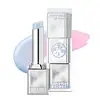What's inside
What's inside
 Key Ingredients
Key Ingredients

 Benefits
Benefits

 Concerns
Concerns

 Ingredients Side-by-side
Ingredients Side-by-side

Hydrogenated Polyisobutene
EmollientBis-Behenyl/Isostearyl/Phytosteryl Dimer Dilinoleyl Dimer Dilinoleate
EmollientHydrogenated Castor Oil Dimer Dilinoleate
Skin ConditioningPolyglyceryl-2 Triisostearate
EmulsifyingOctyldodecanol
EmollientPentaerythrityl Tetraethylhexanoate
EmollientSqualane
EmollientCaprylic/Capric Triglyceride
MaskingMicrocrystalline Wax
Emulsion StabilisingDimer Dilinoleyl Dimer Dilinoleate
EmollientPhytosteryl/Isostearyl/Cetyl/Stearyl/Behenyl Dimer Dilinoleate
Skin ConditioningSynthetic Wax
AbrasiveHydrogenated Vegetable Oil
EmollientHydrogenated Polydecene
EmollientPolyethylene
AbrasiveDiisostearyl Malate
EmollientSucrose Tetrastearate Triacetate
EmollientDiglyceryl Sebacate/Isopalmitate
EmollientHydrogenated Coco-Glycerides
EmollientEthylene/Propylene Copolymer
AbrasiveCI 77891
Cosmetic ColorantParfum
MaskingCitric Acid
BufferingCI 45380
Cosmetic ColorantCI 42090
Cosmetic ColorantCI 17200
Cosmetic ColorantCI 19140
Cosmetic ColorantWater
Skin ConditioningButyrospermum Parkii Butter
Skin ConditioningHelianthus Annuus Seed Oil Unsaponifiables
EmollientPersea Gratissima Oil
Skin ConditioningPlukenetia Volubilis Seed Oil
EmollientSimmondsia Chinensis Seed Oil
EmollientTocopherol
AntioxidantGlycerin
HumectantAlcohol
AntimicrobialButylene Glycol
Humectant1,2-Hexanediol
Skin ConditioningRibes Nigrum Bud Extract
PerfumingBeta Vulgaris Root Extract
Skin ConditioningBrassica Oleracea Capitata Leaf Extract
Skin ConditioningDaucus Carota Sativa Root Extract
Skin ConditioningEuterpe Oleracea Fruit Extract
Solanum Melongena Fruit Extract
Skin ConditioningVaccinium Angustifolium Fruit Extract
Skin ProtectingVaccinium Myrtillus Fruit/Leaf Extract
AstringentRubus Fruticosus Fruit Extract
AstringentSesamum Indicum Seed Extract
Skin ConditioningEthylhexylglycerin
Skin ConditioningHydrogenated Polyisobutene, Bis-Behenyl/Isostearyl/Phytosteryl Dimer Dilinoleyl Dimer Dilinoleate, Hydrogenated Castor Oil Dimer Dilinoleate, Polyglyceryl-2 Triisostearate, Octyldodecanol, Pentaerythrityl Tetraethylhexanoate, Squalane, Caprylic/Capric Triglyceride, Microcrystalline Wax, Dimer Dilinoleyl Dimer Dilinoleate, Phytosteryl/Isostearyl/Cetyl/Stearyl/Behenyl Dimer Dilinoleate, Synthetic Wax, Hydrogenated Vegetable Oil, Hydrogenated Polydecene, Polyethylene, Diisostearyl Malate, Sucrose Tetrastearate Triacetate, Diglyceryl Sebacate/Isopalmitate, Hydrogenated Coco-Glycerides, Ethylene/Propylene Copolymer, CI 77891, Parfum, Citric Acid, CI 45380, CI 42090, CI 17200, CI 19140, Water, Butyrospermum Parkii Butter, Helianthus Annuus Seed Oil Unsaponifiables, Persea Gratissima Oil, Plukenetia Volubilis Seed Oil, Simmondsia Chinensis Seed Oil, Tocopherol, Glycerin, Alcohol, Butylene Glycol, 1,2-Hexanediol, Ribes Nigrum Bud Extract, Beta Vulgaris Root Extract, Brassica Oleracea Capitata Leaf Extract, Daucus Carota Sativa Root Extract, Euterpe Oleracea Fruit Extract, Solanum Melongena Fruit Extract, Vaccinium Angustifolium Fruit Extract, Vaccinium Myrtillus Fruit/Leaf Extract, Rubus Fruticosus Fruit Extract, Sesamum Indicum Seed Extract, Ethylhexylglycerin
Bis-Diglyceryl Polyacyladipate-2
EmollientOctyldodecanol
EmollientIsononyl Isononanoate
EmollientPentaerythrityl Tetraisostearate
EmollientPolyethylene
AbrasiveHydrogenated Coco-Glycerides
EmollientSilica Silylate
EmollientSimmondsia Chinensis Butter
Skin ConditioningCera Microcristallina
Emulsion StabilisingTrimethylsiloxyphenyl Dimethicone
C18-36 Acid Triglyceride
EmollientPentaerythrityl Tetra-Di-T-Butyl Hydroxyhydrocinnamate
AntioxidantBifida Ferment Lysate
Skin ConditioningLimonene
PerfumingAlpha-Isomethyl Ionone
PerfumingCI 77492
Cosmetic ColorantCI 77891
Cosmetic ColorantCI 42090
Cosmetic ColorantGeraniol
PerfumingLinalool
PerfumingCitronellol
PerfumingSodium Benzoate
MaskingAcetic Acid
BufferingLactic Acid
BufferingAluminum Hydroxide
EmollientSilica
AbrasiveParfum
MaskingBis-Diglyceryl Polyacyladipate-2, Octyldodecanol, Isononyl Isononanoate, Pentaerythrityl Tetraisostearate, Polyethylene, Hydrogenated Coco-Glycerides, Silica Silylate, Simmondsia Chinensis Butter, Cera Microcristallina, Trimethylsiloxyphenyl Dimethicone, C18-36 Acid Triglyceride, Pentaerythrityl Tetra-Di-T-Butyl Hydroxyhydrocinnamate, Bifida Ferment Lysate, Limonene, Alpha-Isomethyl Ionone, CI 77492, CI 77891, CI 42090, Geraniol, Linalool, Citronellol, Sodium Benzoate, Acetic Acid, Lactic Acid, Aluminum Hydroxide, Silica, Parfum
Ingredients Explained
These ingredients are found in both products.
Ingredients higher up in an ingredient list are typically present in a larger amount.
Ci 42090 is a synthetic dye created from petroleum. It is used to give a bright blue color to cosmetics, medicine, and food.
Ci 77891 is a white pigment from Titanium dioxide. It is naturally found in minerals such as rutile and ilmenite.
It's main function is to add a white color to cosmetics. It can also be mixed with other colors to create different shades.
Ci 77891 is commonly found in sunscreens due to its ability to block UV rays.
Learn more about CI 77891Hydrogenated Coco-Glycerides isn't fungal acne safe.
Octyldodecanol is a fatty alcohol. It is primarily used to enhance the texture of products.
As an emulsifier, Octyldodecanol helps prevent the oils and waters from separating. It also prevents ingredients from creating foam when shaken.
Octyldodecanol is created by reducing fatty acid to an alcohol.
Due to its high molecular weight, it does not get absorbed into the skin.
Learn more about OctyldodecanolParfum is a catch-all term for an ingredient or more that is used to give a scent to products.
Also called "fragrance", this ingredient can be a blend of hundreds of chemicals or plant oils. This means every product with "fragrance" or "parfum" in the ingredients list is a different mixture.
For instance, Habanolide is a proprietary trade name for a specific aroma chemical. When used as a fragrance ingredient in cosmetics, most aroma chemicals fall under the broad labeling category of “FRAGRANCE” or “PARFUM” according to EU and US regulations.
The term 'parfum' or 'fragrance' is not regulated in many countries. In many cases, it is up to the brand to define this term.
For instance, many brands choose to label themselves as "fragrance-free" because they are not using synthetic fragrances. However, their products may still contain ingredients such as essential oils that are considered a fragrance by INCI standards.
One example is Calendula flower extract. Calendula is an essential oil that still imparts a scent or 'fragrance'.
Depending on the blend, the ingredients in the mixture can cause allergies and sensitivities on the skin. Some ingredients that are known EU allergens include linalool and citronellol.
Parfum can also be used to mask or cover an unpleasant scent.
The bottom line is: not all fragrances/parfum/ingredients are created equally. If you are worried about fragrances, we recommend taking a closer look at an ingredient. And of course, we always recommend speaking with a professional.
Learn more about ParfumPolyethylene is a synthetic ingredient that helps the skin retain moisture. It is a polymer.
It is also typically used within product formulations to help bind solid ingredients together and thicken oil-based ingredients. When added to balms and emulsions, it helps increase the melting point temperature.